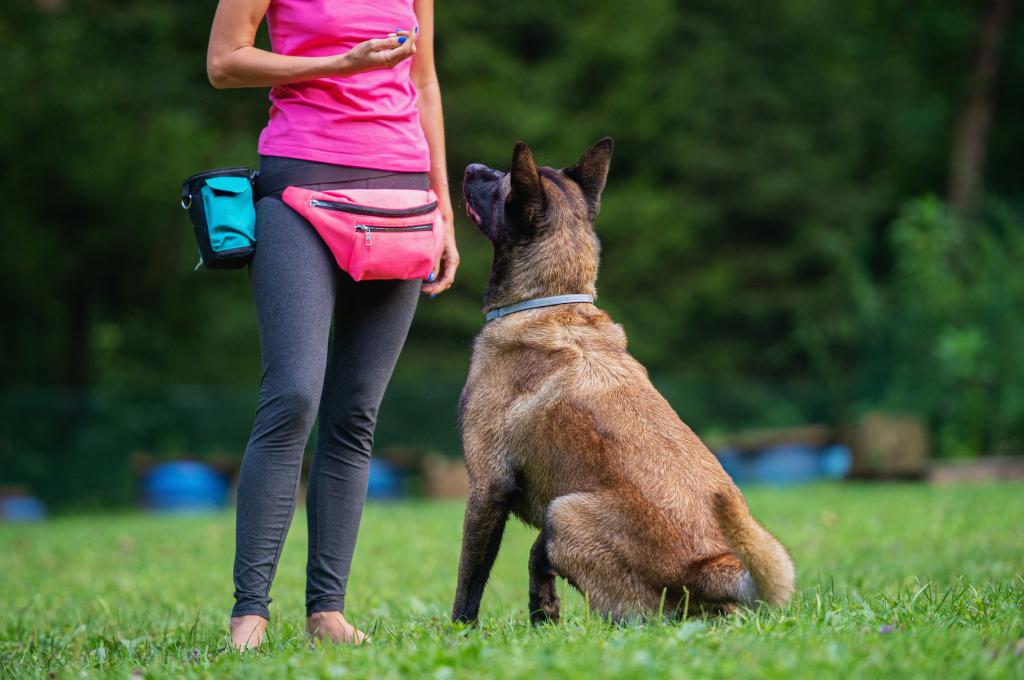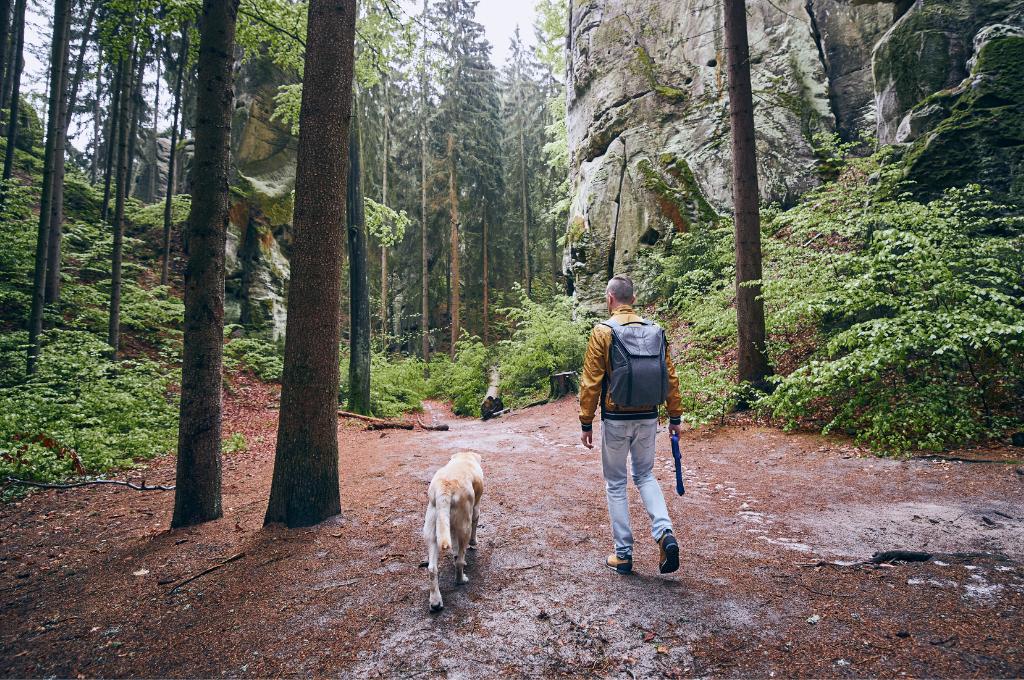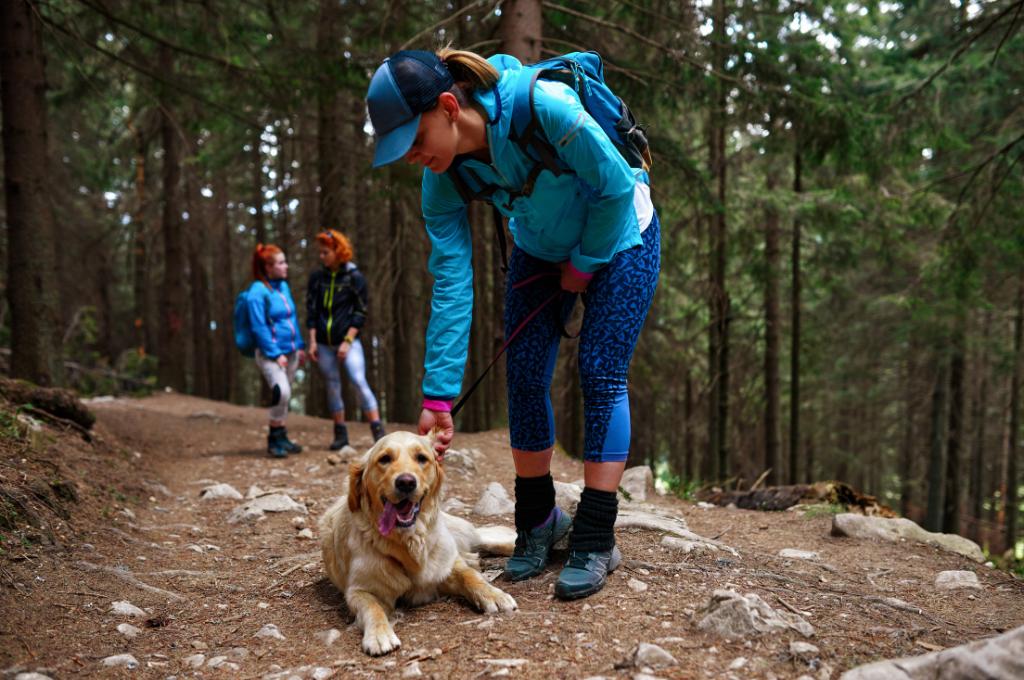The bond between a dog and its owner is a rich and rewarding relationship rooted in trust, affection, and shared experiences. One of the most fulfilling adventures you can undertake with your canine friend is backpacking.
This excursion offers the ultimate crossover of freedom and companionship, as you both trail through the beauty of nature. However, like any great adventure, successful backpacking with your dog requires careful planning, knowledge, and the right set of skills.
In this extensive guide, we’ll take you through the essential steps to prepare for, execute, and savor the backpacking experience with your beloved four-legged partner.
Table of Contents
Introduction to Backpacking with Your Dog
Understanding the Appeal
Backpacking with your dog combines the joys of companionship and adventure into a single experience. It provides a unique opportunity to strengthen the bond between you and your pet, while also allowing you to immerse yourself in the peacefulness of nature.
Outdoor expeditions with your dog can excite both of you, giving you a sense of freedom and discovery that’s difficult to find elsewhere.
Benefits for You and Your Dog
Backpacking with your dog offers more than just the pleasure of taking in beautiful views. It can lead to improved mental and physical well-being for you and can broaden your dog’s horizons and sharpen their skills.
Going backpacking also helps develop resilience, adaptability, and a deeper connection with nature. Furthermore, it’s a great way to maintain both your and your furry friend’s health and vitality.
Preparing for the Journey Ahead
This is not your ordinary dog walk. The path before you will be measured in miles, not steps, and will require a more meticulous planning approach. This section explores the mindset and preparation required for a successful backpacking adventure.

Essential Gear for Backpacking with Your Dog
Gear is fundamental to the comfort and safety of your dog on the trail. Here, you’ll find a list of must-have items designed for your dog’s welfare and enjoyment.
Dog-Friendly Backpacks and Carriers
Invest in a sturdy and comfortable backpack for your dog to help share the load and give them a sense of purpose. Backpacks are not only practical but also provide a unique experience for your dog, simulating a traditional job of herding or carrying messages.
Proper Leashes and Harnesses
The right leash can mean the difference between a peaceful hike and a stressful one. Opt for a hands-free leash or a long lead to give your dog some freedom while still affording you the ability to guide and control.
Food and Water Supplies
Ensure you pack enough dog food for your trip, and possibly a little extra in case of unforeseen circumstances. Hydration is equally important, which is why collapsible bowls and portable water filters should be at the top of your packing list.
Safety Equipment for Your Dog
Pack your dog’s first aid kit with bandages, antiseptic, tweezers for tick removal, and any prescription medications. Also, don’t forget high-visibility gear and a whistle in case of emergencies.

Training Your Dog for Backpacking
Proper training is key to a smooth and enjoyable backpacking experience. We’ll guide you through the steps to prepare your dog physically and mentally for the trail.
Basic Obedience Commands
Building a strong foundation with basic commands enhances safety and control. Dogs should be reliable with ‘come’, ‘stay’, ‘heel’, ‘leave it’, and ‘no’, especially when venturing into the wild where safety is paramount.
Conditioning Exercises for Endurance
Gradually increase your dog’s physical stamina with longer walks and more challenging terrain. Dogs of all ages can benefit from regular physical training in the months leading up to your trip.
Introducing Your Dog to Backpacking Gear
Start with small exposures to the gear. Show your dog the pack, then introduce one piece at a time, using treats and positive reinforcement to create a pleasant association. Familiarity breeds comfort, and soon enough, your dog will be excited to gear up.
Choosing the Perfect Backpacking Destination
Not all trails are created equal, and some may not be well-suited for canine companions. Learn how to select the perfect location that accommodates both your and your dog’s needs.
Dog-Friendly Trails and Parks
Research and select trails that are dog-friendly, considering the length, difficulty, and any public access regulations. Look for designated dog-friendly areas that encourage responsible pet ownership.
Considering Terrain and Climate
The terrain and weather will dictate what kind of gear you’ll need for your dog. Choose paths that suit your dog’s physical abilities and climate that won’t cause them undue stress or discomfort.
Researching Local Regulations and Policies
Familiarize yourself with the rules and regulations of the trail. There may be leash laws, pet waste policies, and area-specific cautions or restrictions to abide by.
Preparing for Your Backpacking Trip
Before you hit the trail, comprehensive preparation is in order. Detailed packing, emergency planning, and health precautions should be taken seriously.
Packing Essentials for You and Your Dog
Create a list of necessary items, from insect repellent for you to a comfortable sleeping pad for your dog. Pack versatile gear and rations that cater to both you and your pet’s needs.
Creating an Emergency Plan
Decide on a response if an emergency occurs. Ensure your dog’s ID information is up to date, and you have the contact information of the nearest veterinarian. Additionally, a plan for emergency evacuation should be established.
Health Precautions and Vet Check-ups
Visit the vet before the trip to ensure your dog is healthy and up-to-date on vaccinations. Discuss flea, tick, and heartworm prevention methods, which are crucial for any outdoor excursion.

On the Trail: Tips for a Successful Backpacking Experience with Your Dog
Once on the trail, there are several best practices to follow. Find out how to manage your pace, and your dog’s energy levels, and how to be a responsible hiker.
Setting a Comfortable Pace
Take it slow, especially at the beginning. Listen to your dog’s body language and keep an eye on their energy levels. Frequent breaks and a reasonable pace will keep both of you refreshed.
Managing Your Dog’s Energy Levels
It’s important to monitor your dog’s behavior for signs of fatigue or disinterest. Providing frequent food and water breaks will help replenish their energy.
Proper Trail Etiquette and Environmental Awareness
Be courteous to fellow hikers by sharing the trail and keeping your dog on a leash where required. Preserve the natural beauty by staying on the trail and minimizing disturbances to wildlife.
Campsite Etiquette and Safety Measures
Camping with your dog requires a different set of considerations. Learn the best practices for setting up camp and maintaining safety.
Setting Up Camp Responsibly
Choose a spot that’s at a safe distance from cliffs, bodies of water, and wildlife sleeping or feeding areas. Secure an area for your dog to prevent them from wandering and to establish a sense of boundaries.
Securing Your Dog at the Campsite
Use a tie-out stake or a portable dog run to keep your pet from running off. Ensure they have enough space to move comfortably but not so much that they can wrap around obstacles or cross into other camper’s spaces.
Fire Safety and Wildlife Awareness
Keep your dog away from the campfire and store food securely to prevent wildlife encounters. Practice proper fire safety and adhere to local regulations regarding campfires
Nutrition and Hydration for Your Dog on the Trail
Maintaining a balanced diet and proper hydration is just as important for your dog as it is for you. Here’s how to manage their sustenance on a backpacking trip.
Planning Balanced Meals for Your Dog
Portion meals according to your dog’s breed, size, and energy expenditure. High-quality dog food with a proper balance of nutrients is recommended.
Monitoring Water Intake and Hydration Levels
Assure your dog has access to clean water, and monitor their hydration level by observing the color of their urine and the elasticity of their skin.
Avoiding Common Dietary Pitfalls
Resist giving your dog human food or allowing them to forage. A sudden change in their diet can lead to digestive issues, and foraged food may be toxic.

Rest and Recovery: Ensuring Your Dog’s Wellbeing
Restorative rest is crucial. Providing comfort and recognizing your dog’s physical limits can prevent long-term damage or exhaustion.
Providing Comfortable Sleeping Arrangements
Set up a cozy sleeping area for your dog. Options like insulated pads and dog-specific sleeping bags can maintain their body temperature during the night.
Recognizing Signs of Fatigue or Discomfort
Learn to read your dog’s body language to understand when they’re ready to rest. Hanging back ears, a tail between the legs, and lagging are indicators your dog needs a break.
First Aid for Common Injuries or Ailments
Be prepared for scrapes, sprains, and bug bites. Your dog’s first-aid kit should be equipped to address these minor ailments. Training in basic wound care can be invaluable.
Enjoying the Journey Together: Activities and Bonding Opportunities
Engage in interactive activities beyond the mundane walk. Exchange games, learn from each other, and solidify the unique bond shared by backpacking pairs.
Games and Exercises for Mental Stimulation
Trail games like hide and seek or bringing along their favorite toy can provide mental stimulation while reinforcing your dog’s training. Mental activity is just as tiring as physical for your dog.
Exploring Nature’s Wonders with Your Dog
Take time to appreciate the environment through your dog’s eyes. Their curiosity is infectious, and their joy in the simple act of exploration can be a powerful reminder of life’s wonders.
Capturing Memories Through Photography
Snap photos of your dog in their natural element. Not only does this create cherished memories, but it also immortalizes their unique spirit.
Environmental Responsibility: Leave No Trace Principles
An important aspect often overlooked. Understand and practice “Leave No Trace” principles to preserve the sanctity of the natural environment for generations to come.
Minimizing Your Ecological Footprint
Packaging and items that enter the trail should leave with you. Opt for reusable containers, refuse unnecessary packaging, and pick up any litter for proper disposal.
Proper Waste Disposal Techniques
Apply practical waste management methods. Bury dog waste away from water sources, trails, and campsites, and preferably carry it out in designated dog waste bags.
Preserving Natural Habitats for Future Generations
By hiking responsibly, you set an example of eco-friendly outdoor ethics. Maintain an appreciation for the natural world and inspire others to do the same.
Dealing with Unexpected Challenges on the Trail
Sometimes, the trail takes an unexpected turn, presenting challenges you hadn’t prepared for. Here’s how to address them calmly and effectively.
Weathering Inclement Weather
Have a plan for weather changes. Pack an extra layer for your dog, know the signs of hypothermia or heatstroke, and adjust your plans accordingly.
Handling Encounters with Wildlife
Stay alert and keep your dog under control when wildlife is present. Teach your dog commands like “leave it” to help diffuse potentially dangerous situations.
Addressing Behavioral Issues or Aggression
If your dog displays aggressive behavior toward others or new environments, consider professional training and socialization practices before your next trip.

Celebrating Success: Milestones and Achievements
Each backpacking excursion is a milestone in your relationship. Reflect on the growth and development you both experienced and share your story with others.
Reflecting on Your Journey Together
Take time to reflect on your shared accomplishments. Each trail conquered is a testament to the bond that you and your dog have developed.
Recognizing Growth and Development in Your Dog
Observe the transformations in your pet, whether it’s increased confidence, improved focus, or a calmer disposition. These changes are profound and something to be proud of.
Sharing Your Experience with Fellow Backpackers
Join the community of backpackers and share your knowledge. Inspire others to take their dogs with them on the trail and expand the horizons of what’s possible.
Conclusion
Backpacking with your dog presents a unique opportunity to deepen the bond between you while exploring the breathtaking beauty of the natural world. It’s an adventure that not only tests your resilience and preparedness but also promises an unparalleled sense of companionship and achievement.
By following the guidelines outlined in this guide, you and your furry friend are well on your way to creating memories that will last a lifetime. Remain respectful of the environment, prioritize safety, and embrace the joy of discovering each trail’s unique challenges and wonders together.
Remember, each step taken on the trail is a step towards a deeper companionship and a shared appreciation of the world’s natural beauty. May your backpacking experiences be filled with joy, discovery, and the thrill of exploration, leaving both you and your dog eager for the next adventure.
Happy backpacking!
Frequently Asked Questions (FAQs)
Can Any Dog Go Backpacking?
Most dogs can adapt to backpacking if they are in good health and condition. However, not all dogs will enjoy it. Always consider your dog’s temperament and preferences before deciding if backpacking is right for them.
How Do I Train My Dog for Backpacking?
Training for backpacking involves building endurance, acclimating to gear, and adhering to proper trail etiquette. Start training early, and progress gradually to avoid stress or injury to your dog.
What Should I Do if My Dog Gets Injured on the Trail?
Immediately assess the severity of the injury and stabilize your dog. Provide any first aid within your capabilities, and seek emergency veterinary care if needed.
Is Backpacking Suitable for Older Dogs?
Backpacking may not be suitable for all older dogs, especially those with health issues. Consult your veterinarian and take the necessary precautions to ensure their safety and comfort.
How Can I Prevent My Dog from Disturbing Wildlife?
Ensure your dog is under your control, preferably leashed, and avoid allowing it to wander unsupervised. Keep your dog quiet and minimize its impact on the wilderness.
What Do I Do if My Dog Encounters Another Dog on the Trail?
Remain calm and in control. Assess the situation and communicate with the other owner. Whenever possible, keep a safe distance between the two dogs and avoid confrontation.



